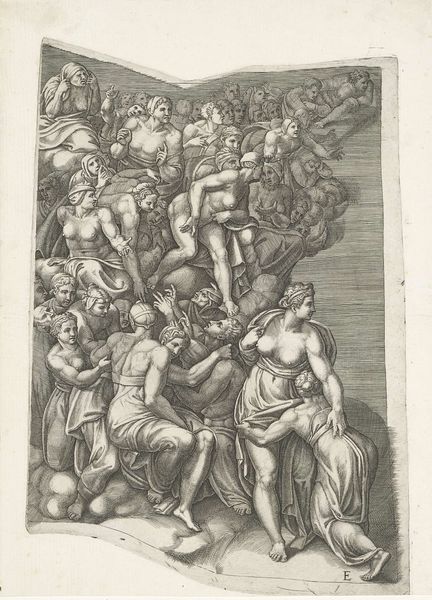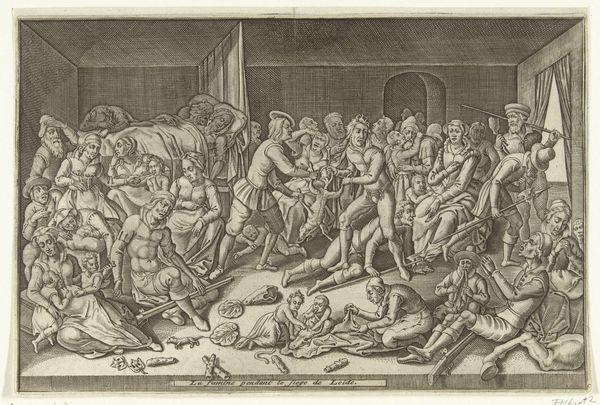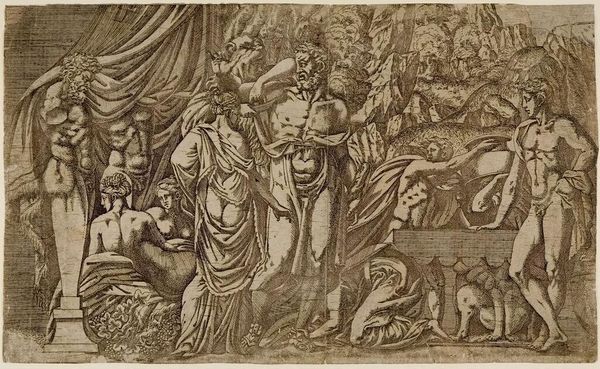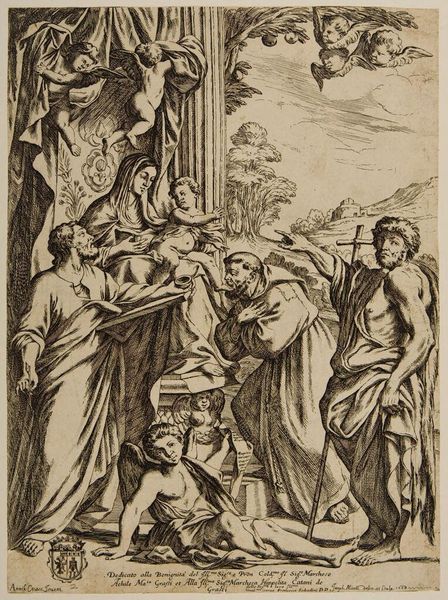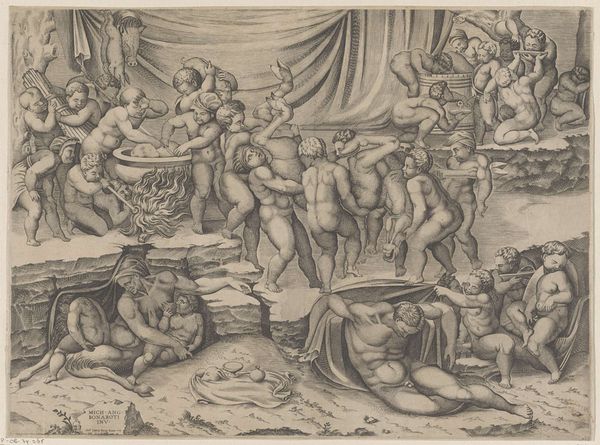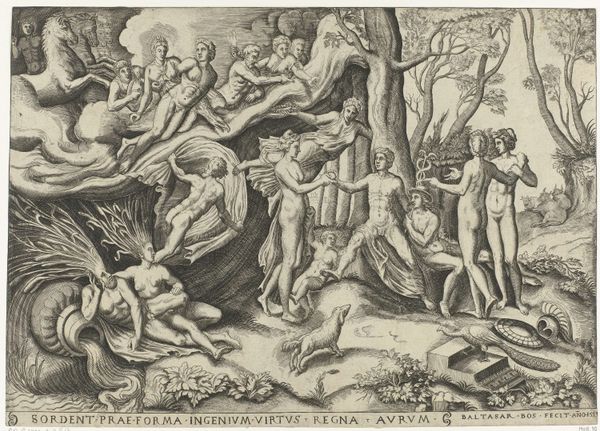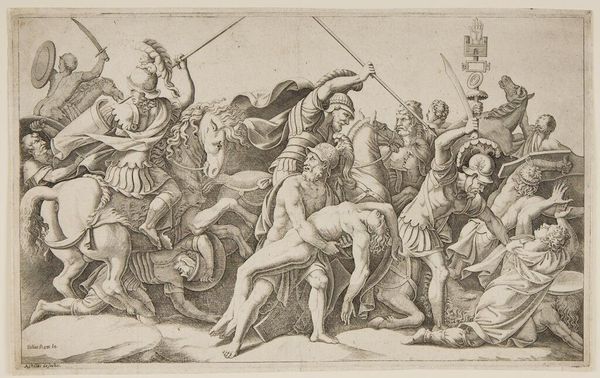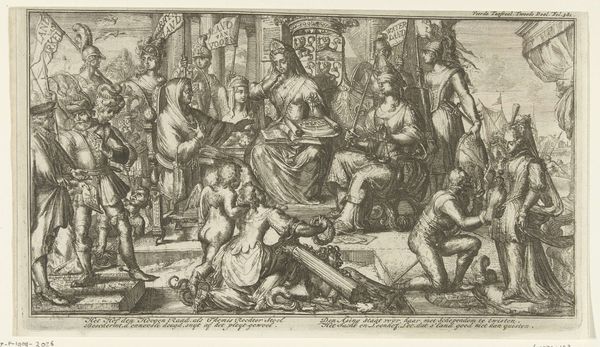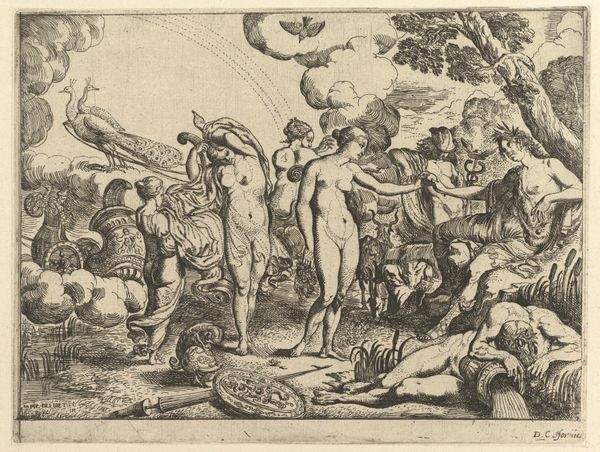
Copyright: CC0 1.0
Curator: This print, titled "The Flaying of Marsyas," was created by Giulio Bonasone, who lived from 1510 to 1576. What strikes you first? Editor: The overwhelming sense of agony. The composition, with its multitude of figures, seems to amplify the central act of violence. It feels performative. Curator: Indeed. The image taps into a deep-seated cultural narrative. Marsyas, the satyr, dared to challenge Apollo to a musical contest. His punishment—being flayed alive—resonates as a cautionary tale against hubris. Editor: And the act itself becomes a public spectacle, a tool for maintaining social order. The expressions on the onlookers' faces are fascinating—some detached, others seemingly enjoying the gruesome scene. It certainly implicates the viewer. Curator: Precisely. The visual symbols within the image—the lyre representing Apollo's authority, the suffering of Marsyas—carry significant psychological weight. They speak to the dangers of challenging established power. Editor: It's a stark reminder of how art can reflect and reinforce societal norms, even through depictions of extreme violence. I hadn't expected such a visceral response. Curator: The lasting power of symbols, isn’t it remarkable? Editor: Absolutely. A chilling, yet compelling meditation on power and transgression.
Comments
No comments
Be the first to comment and join the conversation on the ultimate creative platform.
